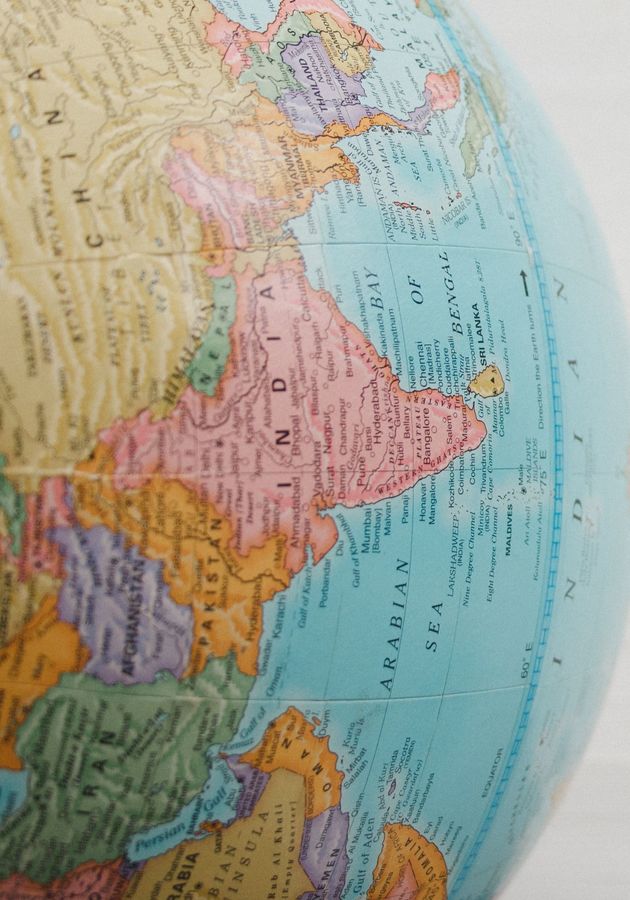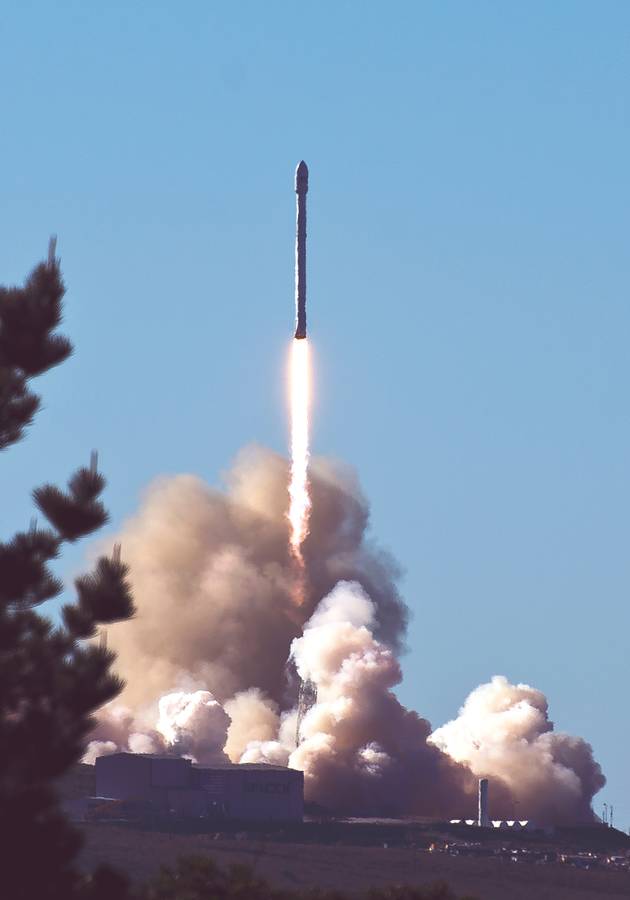Despite all the information they have at their disposal, the extent to which most people nowadays misunderstand the fundamental workings of the modern world is, perhaps, worrying, mostly because they are deprived of realizing our future limits and opportunities. The product of his life’s work, ‘’How the World Really Works’’ by Vaclav Smil, is a book written by a scientist with the intention to reduce the comprehension deficit and outline our humanity’s possible future scenarios. So, get ready to discover how our high-energy societies have been steadily increasing their dependence on fossil fuels, how the world has become so interconnected by transportation and communication, and much more!
When it all began
The claims that we can stop climate change by decarbonizing the global energy supply to zero by 2050 have become common in the past few years. To understand why zero emission will be highly unlikely even in twenty to thirty years, let’s go back to the beginning and see when and to which extent we have become reliant on fossil fuels.
Say another sapient civilization has observed our planet and its inhabitants since its beginnings to modern times to detect shifts in energy conversions. The first occasion worth noticing happened nearly 3.5 billion years ago when simple, single-celled photosynthetic microbes in shallow seas started absorbing near-infrared radiation. It then took hundreds of million years to pass before cyanobacteria began to use the energy of visible incoming solar radiation to convert CO2 and water into new organic compounds and release oxygen. This conversion represents a radical shift since it created Earth’s oxygenated atmosphere. However, a long time will pass until extraterrestrial observers document the emergence of the first simple organisms that required oxygen for survival.
Several hundred thousand years ago, the first extra somatic usage of energy was detected when our ancestors began deliberately using fire for cooking, co mfort, and safety. Another unprecedented shift began in 1600 when people started using coal as a heat source, and then, at the very beginning of the 18th century when steam engines in English mines became the first inanimate prime movers powered by the combustion of fuel.
By 1950, fossil fuels made up nearly three-quarters of primary energy, and inanimate prime movers - now with gasoline - and diesel-fueled internal combustion engines in the lead - provided more than 80% of all mechanical energy. At the beginning of the 21st century, only low-income communities depended on biomass fuels, with wood and straw providing only about 12% of the world’s primary energy. The most recent observation of our planet would detect ‘’a truly global society built and defined by mass-scale, stationary, and mobile conversions of fossil carbon, deployed everywhere but in some of the planet’s uninhabited regions,’’ writes Smil.
Zero emission by 2050?
If we want to understand the implications of the mobilization of extra somatic energies, we should look at the energy available for conversion. Having pre-consumption losses, non-energy use, and losses during electricity transmission in mind, Smil came to calculations that show a ‘’60-fold increase in the use of fossil fuels during the 19th century, a 16-fold gain during the 20th century, and about a 1,500-fold increase over the past 220 years.’’ If we express these rates in per capita terms, we can say that an average inhabitant of the Earth nowadays has nearly 700 times more useful energy at their disposal compared to what people at the beginning of the 19th century had.
An abundance of useful energy brings overall improvement in our lives, such as rich nourishment, travel to distant places, and instant personal electronic communication, but also, raises concerns about the vulnerability of their supplies and the environmental impacts of their combustion. When it comes to fossil fuel resources in the Earth's crust, we face no danger of running out of coal and hydrocarbons. However, the rapid rate of global warming has led to calls for the decarbonization of the global energy supply, which would lead to zero emission by 2050. According to Smil, this goal is hardly reachable, considering that annual CO2 emissions from fossil fuel combustion surpassed 37 billion tons in 2019. Total decarbonization calls for switching to different energy sources. However, those are not enough to meet the total demand, as countries that use intermittent energy sources confirm. For instance, in 2020, two decades after boosting its wind and solar capacity 10-fold and raising the share of renewables (wind, solar, and hydro), Germany still had to keep most of its fossil-fired capacity (89% of it) to meet demand on cloudy and calm days. Nuclear reactors, on the other hand, offer safe, long-lasting, and highly reliable ways of electricity generation and can operate more than 90% of the time. However, the future of nuclear generation remains uncertain, and only a few countries are currently committed to further expansion of their capacities. So, considering these facts, a more realistic goal would be to pursue a steady reduction of our dependence on fossil carbon rather than sudden abandonment.
Food production and fossil fuels
Throughout preindustrial history, the typical human diet was monotonous, and malnutrition, as well as undernutrition, were frequent, even during the years of above-average harvests. Moreover, famine was common as crops often failed or were destroyed in wars. As Smil emphasizes, ‘’until a few generations ago only a small share of well-fed elites did not have to worry about having enough to eat.’’
Fortunately, during the past three generations, the number of people who experience food shortages significantly declined - compared to 1950, when the malnutrition rate was 2 in 3, in 2019, the rate was 1 in 11. The increase is caused by better crop varieties, agricultural mechanization, fertilization, irrigation, and crop protection, and mostly by the direct and indirect use of fossil fuels in food production. Fuels power machinery and enable transporting of harvests from fields to storage and processing sites and irrigation pumps. Moreover, together with electricity, they are used in the production of agricultural machinery, fertilizers, agrochemicals, and other inputs ranging from glass and plastic sheets for greenhouses to global positioning devices that enable precision farming.
Although global malnutrition is substantially reduced, there are many reasons why we should not continue current practices of food production - the most important one is a significant contribution to the generation of greenhouse gases. So, what are better ways to reduce agriculture’s dependence on fossil fuels? Since documented global food losses are extremely high, mainly because of a wide gap between output and demand, one solution would be to reduce food waste. Affluent societies, for instance, try to reduce agriculture’s dependence on fossil fuel subsidies by promoting healthy and satisfactory alternatives to diets rich in meat. Moderate meat consumption and favoring meat that can be grown with lower environmental impact is, according to Smil, a much better option than a quest for mass-scale veganism, which is destined to fail. Decarbonized irrigation with pumps powered by solar or wind-generated electricity and batteries with improving energy density and lower cost would open opportunities for running field machinery without fossil fuels. However, they are currently a very long way off - in Smil’s words, ‘’Even if we try to change the global food system as fast as is realistically conceivable, we will be eating transformed fossil fuels, be it as loaves of bread or as fishes, for decades to come.’’
Understanding globalization
Realizing how the world works cannot be done without understanding how we have become so interconnected by transportation and communication. If we define globalization as the movement of mass, transmission of information and investment within and among continents, we can say that it began long ago - in prehistoric times - when merchant ships sailed from Egypt to Europe and Asia, and vice versa. According to Smil, this was the first era of globalization that ended with the invention of steam engines thanks to which intercontinental linkages became more common, intensive, and predictable. First diesel engines, flight, and radio brought globalization to the next stage, while large diesels, turbines, containers, and microchips made the phenomenon escalate to the extent we are familiar with nowadays. So, as Smil notes, ‘’the advances of globalization were closely tied not only to the rising capacities and better performance of powerful prime movers but also to the relentless miniaturization of components needed for computing, information processing, and communication.’’
Although the progress of globalization brought many advances and created the contemporary world we know, recent general trends toward populism and nationalism, as well as the rising security concerns, show that most aspects of globalization will not rise to new heights. The COVID-19 pandemic demonstrated how challenging it is to protect the lives of citizens when protective equipment, principal drug components, and common medications come from several Chinese and Indian suppliers. Of course, concerns do not only come from the healthcare sector. For instance, in the U.S. rising imports of large Chinese transformers create anxiety about the availability of spare components and the potential for future grid destabilization. For this reason, it is not surprising that a survey conducted in 2020 showed that 64% of American manufacturers predict that reshoring is likely following the pandemic. What will happen next is challenging to foresee - although we have perhaps seen the peak of globalization, its decline may last for decades to come.
What is our future?
In modern usage, the term ‘’apocalypse’’ denotes the end of life on Earth, and it is used by ‘’modern promoters of doom’’ who see rapid population growth, environmental pollution, and global warming as predictors of the world’s destruction. Contrary to them, techno-optimists believe artificial intelligence and deep learning systems will bring miracles and eternal salvation. Futurist Ray Kurzweil, for instance, predicts that machine intelligence will surpass human intelligence by 2045 - and together, they will fill the universe and make its colonization an effortless endeavor.
Rather than navigating to one of the two extremes, it is more likely our future will lie somewhere in between. The truth is, most available forecasts, even the short-term ones, don’t provide solid insights and good guidance - those concerning the worldwide adoption of electric cars are an excellent example. According to estimations between 2014 and 2016, the share of electric vehicles on the road was 8-11% by 2020, while the actual share was only 2.5%. In essence, only forecasts that deal with processes whose workings are well known and whose dynamics are inherently restricted to a relatively confined set of outcomes, such as general demographic projections and fertility forecasts, offer plausible pictures.
Despite our extensive knowledge, Smil says we are not in a position to foresee the extent of coming technical innovations nor the events or decisions that would determine our fate during the next several decades. However, it is realistic to expect new pandemics in the remainder of the 21st century. Moreover, considering how much greenhouse gases remain in the atmosphere after they have been emitted (for CO2, up to 200 years), it is clear that even strong efforts to reduce the emission will not bring significant improvement regarding global warming for several decades.
While we cannot be certain about how our future will look like, we can be realistic and say that it will, most likely, be a combination of progress and setbacks, ‘’seemingly insurmountable difficulties and near miraculous advances.’’ To conclude with Smil’s words, our future ‘’as ever, is not predetermined. Its outcome depends on our actions.’’
Final Notes
Although we live in the age of advances in all fields, the tendency to think in extremes is a past heritage most people are still not ready to abandon. For this reason, we hope that Smil’s book will gain many readers because of its rational, matter-of-fact approach to explaining our past, present, and future.
As Bill Gates wrote, ‘’How the World Works’’ is a compelling and highly readable book that leaves readers with the fundamental grounding needed to help solve the world’s toughest challenges.”
12min Tip
Do you eat lots of meat? If yes, you probably dread switching to a less meaty diet. We advise you to reduce your meat intake, at least for a short period, to contribute to your health and reduction of agriculture’s dependence on fossil fuels. And who knows, perhaps you will adjust to your new diet and never return to your old eating habits!




























